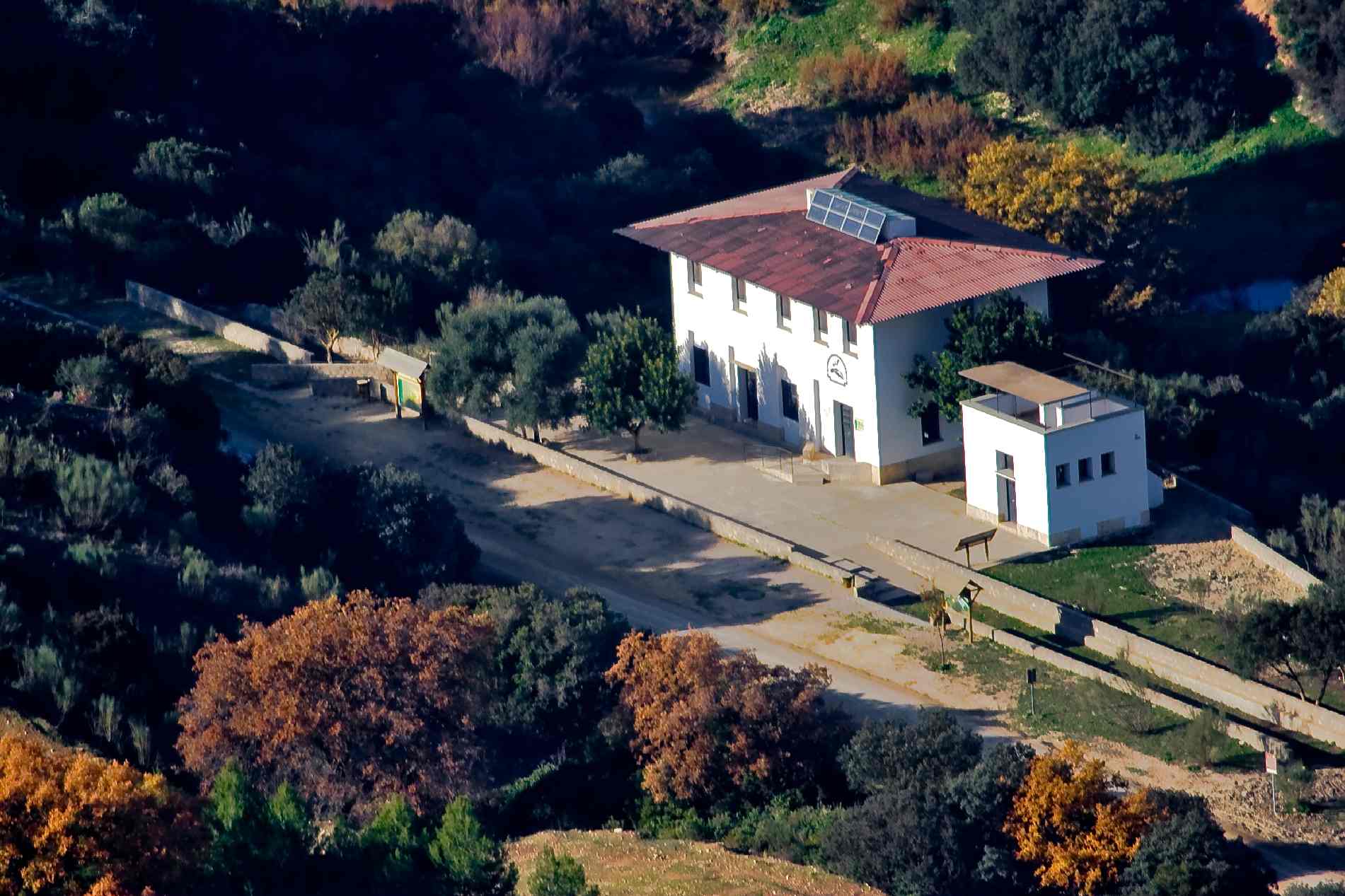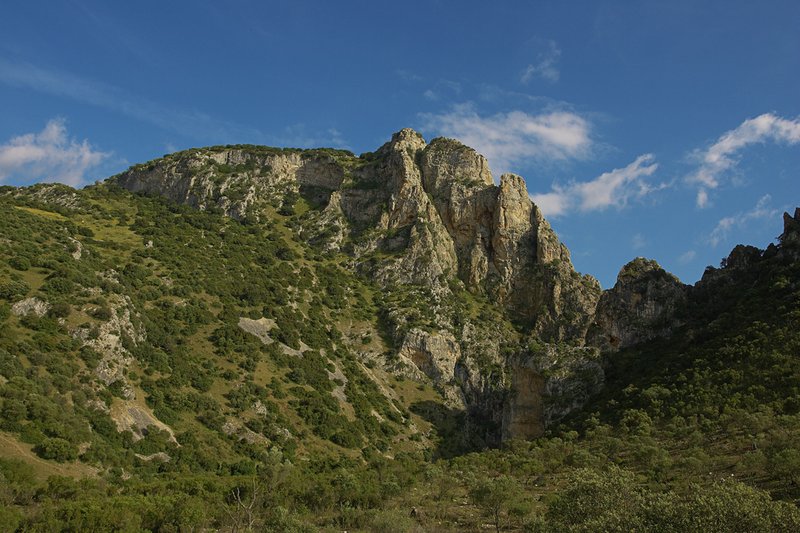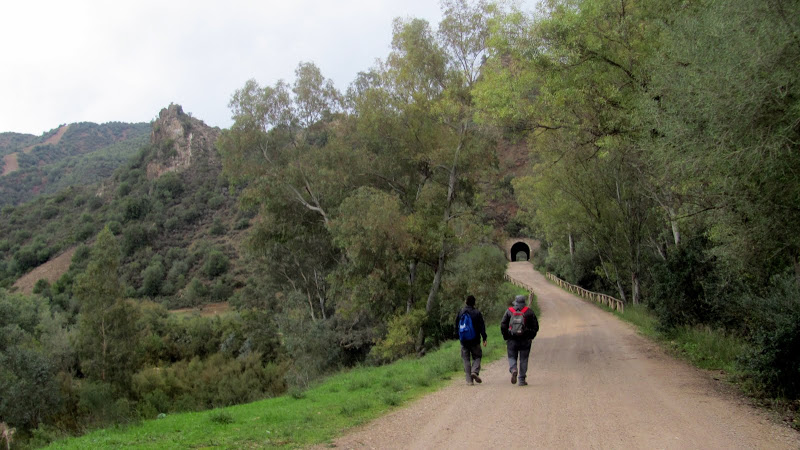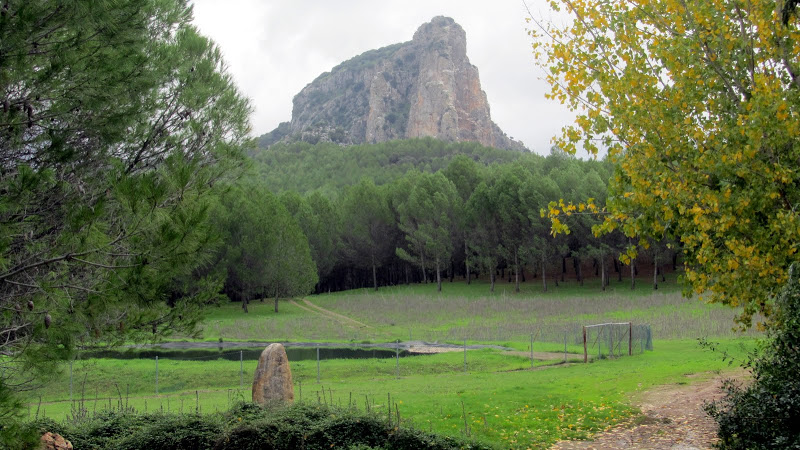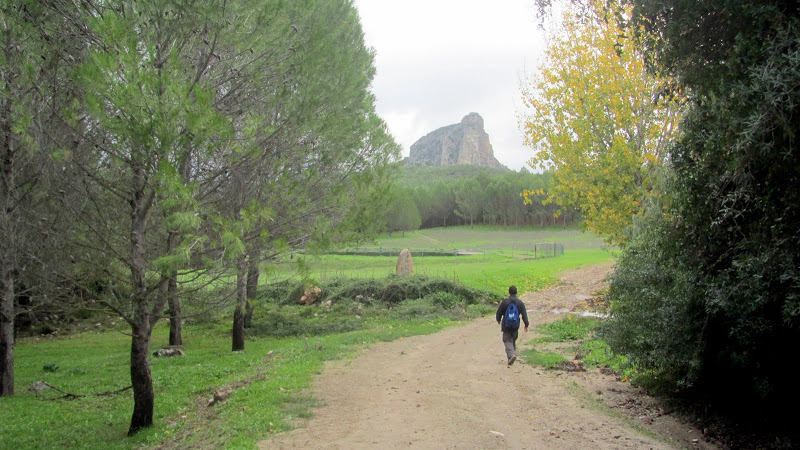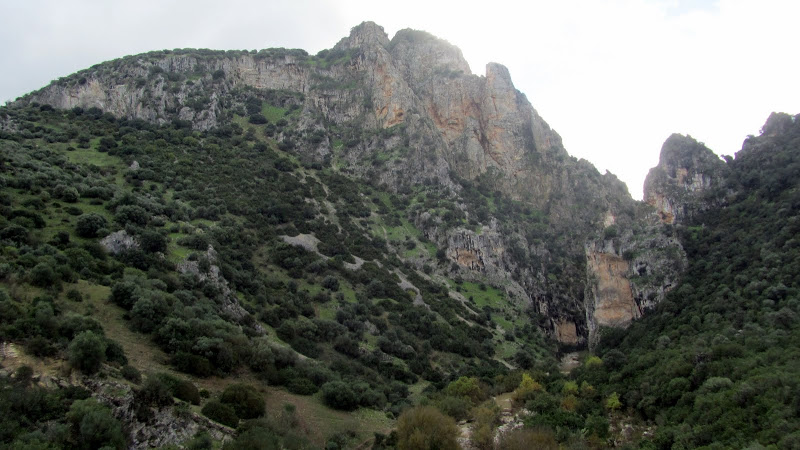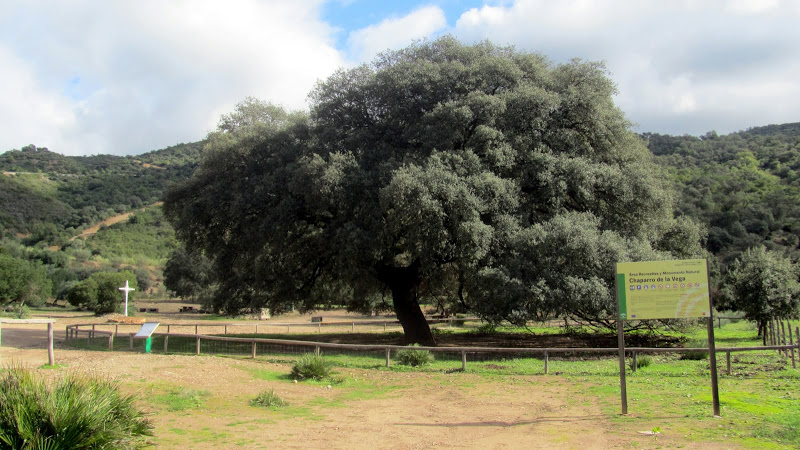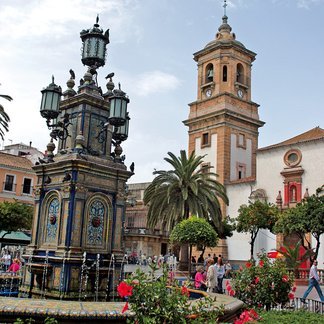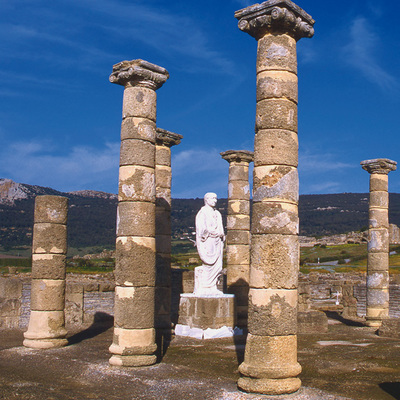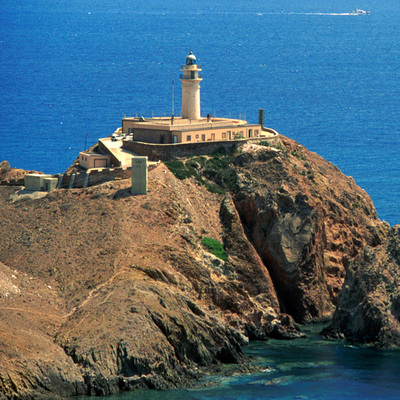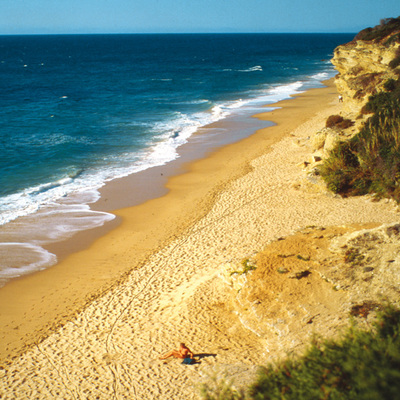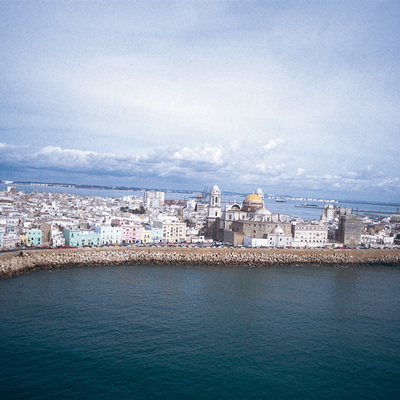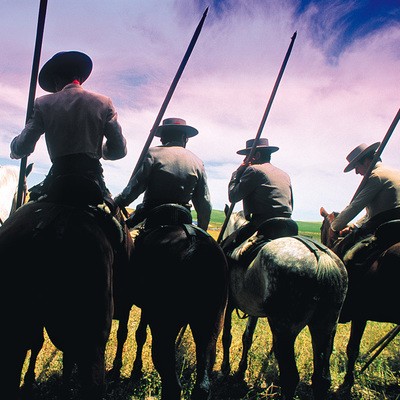Peñón de Zaframagón
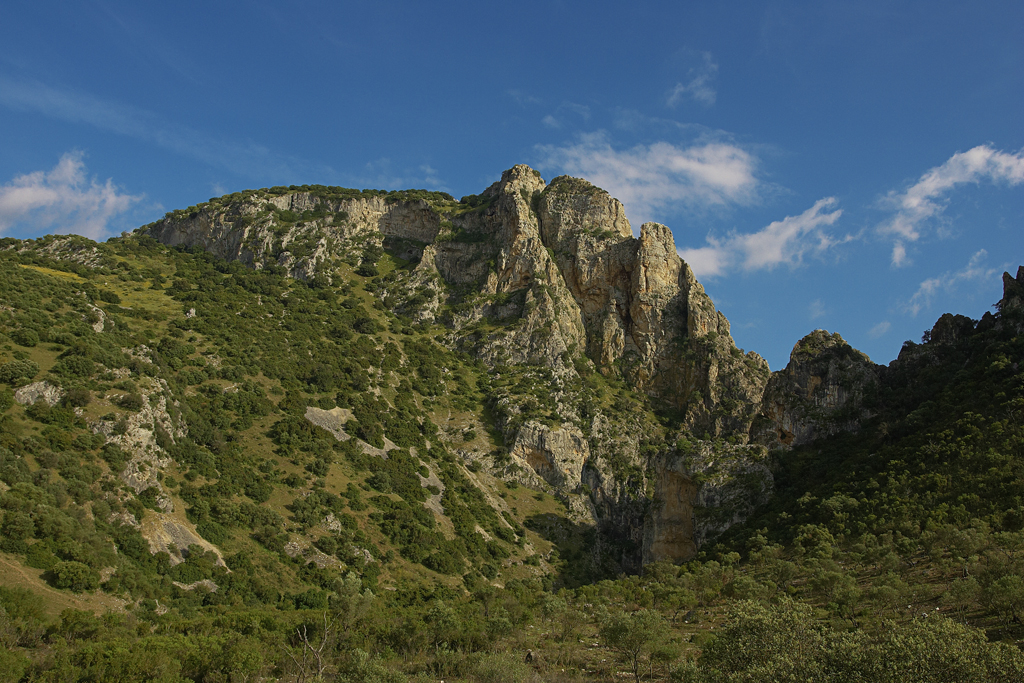
This amazing geographical formation stands between the open countryside of Cádiz and Sevilla provinces. The best way to get there is on foot, by bike or on horseback, along the greenway that runs between the villages of Olvera and Coripe.
The crag is even more beautiful on account of the Guadalporcún River, that runs alongside it, carving out a deep canyon at its base known as El Estrechón. Along the course of the river there are also pools, giants kettles and small waterfalls. Here there is an easy canyoning route, while there is barbel and carp fishing to be had in the nearby Guadalmanil River.
This crag looks all but bare, but is actually an island of autochthonous vegetation, home to unique communities of flora. Besides areas of holm oaks and wild olive trees that cover the lower areas, the most abundant plants are riverine vegetation and rupiculous plants, which cling to the canyon walls and steep slopes of the crag. There is also Mediterranean scrub with mastic, rosemary and rockrose, as well as juniper.
However, this area is most important for bird life. Here, in an area of less than half a square kilometre, is the nesting ground for the largest colony of Griffon vultures in Andalusia and one of the largest in Spain. As a result, it was designated a Special Birdlife Protection Area in 2002.
It is also home to other birds of prey such as the Egyptian vulture, Bonellis eagle, falcon and eagle owl, many of which are endangered species. Smaller birds you can see here include the crag martin, thekla lark, black wheatear, blue rock thrush, and corvidae such as jackdaws, red-billed choughs and crows.

